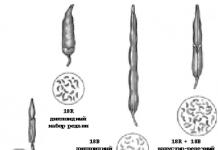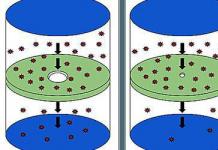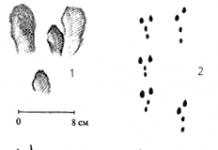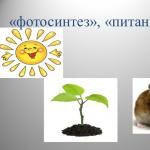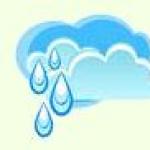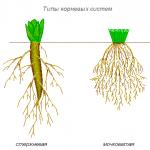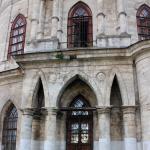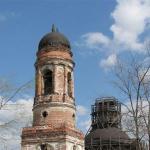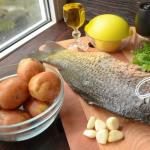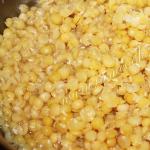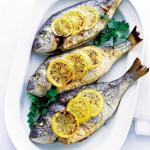Scientific experiments, carried out for a long time by scientists around the world, have clearly proven that the particles that make up all bodies are in constant motion.
The doctrine of these tiny particles that make up any substance (solid, liquid, gaseous) arose during the heyday of ancient cultures long before our era. The famous scientists and philosophers Democritus, Epicurus, Anaxagoras, Lucretius and others agreed that everything consists of the smallest indivisible atoms, and various atoms form the corresponding various substances. Answer to the question: "What phenomena confirm the movement of molecules?" was found later. These germs of ideas begin to take shape into modern molecular kinetic theory only in the 18th century AD.
What phenomena confirm the movement of molecules?
Scientists began to guess that molecules move chaotically a long time ago. But in order for the guesses to become something more serious and receive scientific justification, physicists had to answer the question for themselves and the whole world: “What phenomena confirm the movement of molecules?”
- The first thing that comes to mind is dissolution.
- The second is evaporation.
- And the third, most difficult thing is diffusion.
Diffusion
Diffusion is the mutual penetration of molecules of one substance into the intermolecular voids of another substance. Translated from Latin, the term “diffusion” means “spreading, spreading.”
The particles that make up bodies (gaseous, liquid, solid) are located at a certain distance from each other and are constantly moving.
It is interesting that most of the volume of any body is occupied by free space. To understand the scale, you can imagine the nucleus of an atom in the form of a small hazelnut, then the orbits of the electrons of this atom will be approximately equal to the size of a large skating rink or a huge swimming pool.
Diffusion in gases
Molecules move fastest in gases. In this case, the particles move chaotically.

Diffusion occurs both between homogeneous gases and between gases of different concentrations.
Diffusion in liquids
The bonds between molecules in liquids are stronger than in gases.

If you slowly and carefully add clear water to a glass half filled with a solution of copper sulfate, then at first the boundary between the blue and transparent liquid will be clearly and sharply marked. After a very short period of time, the water will begin to turn blue, the boundary will blur, and later the liquid will become light blue and almost homogeneous.
Diffusion in solids
The movement of molecules in solids is very slow. But still, if, for example, you fuse a small amount of gold onto a lead rod and leave it there at a temperature of at least 300 degrees, then after a day the gold molecules will penetrate about a centimeter into the intermolecular voids of the lead.
Diffusion under heating conditions
When heated, diffusion occurs much faster, therefore, we can conclude that the higher the body temperature rises, the higher the speed of movement of molecules becomes. Accordingly, the faster the molecules move, the higher the body temperature rises. At temperatures close to absolute zero, the speed of particle movement is reduced to the maximum.
Examples of diffusion
Examples of diffusion are found in everyday life, in industry, in the life of humans and animals:

- welding and soldering processes;
- production of metal alloys;
- respiration of fish and terrestrial invertebrates;
- the flow of nutrients from the intestines into the blood;
- infection with viruses and infections;
- smoking;
- extraction of sugar from beets and cane;
- distribution of odors (perfume industry, aromatherapy, religious ceremonies);
- insect communication;
- damage by tear and other poisonous gases, gas chambers in concentration camps;
- environmental pollution;
- brewing infusions, tea and coffee, preparing tinctures, compotes, syrups, dissolving sugar and salt;
- mixing cocktails;
- salting and pickling of vegetables and other products;
- tears from onions.
Diffusion: test
- What phenomena confirm the movement of molecules? a) dissolution, evaporation, diffusion; b) diffusion, heating, gluing.
- Can a drop of vegetable oil cover the ocean? a) yes; b) no, it will spread as much as the thickness of one molecule allows.
- In which bodies does diffusion proceed faster? a) in gases; b) in liquids; c) in solids; d) doesn't matter.
- When heated, liquids, metals and gases in volume: a) increase; b) decrease; c) do not change.
- Is the speed of molecules in still air the same in hot and cold weather? a) faster in cold weather; b) slower in the heat; c) slower in cold weather; d) the speed does not change.
- What conclusion can be drawn by studying the material on diffusion: a) the molecules of all substances on Earth are motionless; b) molecules of all substances move at one speed or another.
- Does diffusion depend on the temperature of bodies: a) with increasing temperature, diffusion begins to proceed more slowly; b) with increasing temperature, diffusion begins to occur faster; c) diffusion does not depend on temperature in any way.
Answers: I - a; II - b; III - a; IV - a; V - in; VI - b; VII - b.
If all bodies are made up of tiny particles (molecules or atoms), why don't solids and liquids break down into individual molecules or atoms? What makes them stick together, because the molecules are separated from each other by spaces and are in continuous random motion?
The fact is that there is mutual attraction between molecules. Each molecule attracts all neighboring molecules and the name itself is attracted.
When we break a thread, break a stick, or tear off a piece of paper, we overcome the forces of attraction between molecules.
It is completely impossible to notice the attraction between two molecules. When many millions of such particles are attracted, the mutual attraction becomes significant. Therefore, it is difficult to break a rope or steel wire with your hands.
The attraction between molecules in different substances is not the same. This explains the different strengths of bodies. For example, steel wire is stronger than copper wire. This means that steel particles are attracted to each other more strongly than copper particles.
The attraction between molecules becomes noticeable only when they are very close to each other. At a distance greater than the size of the molecules themselves, the attraction weakens. Two drops of water merge into one if they touch. Two lead cylinders lock together when pressed closely together with smooth, freshly cut surfaces. In this case, the clutch can be so strong that the cylinders cannot be separated from each other even under heavy load (Fig. 11).
However, shards of glass cannot be healed even by pressing them tightly. Due to the irregularities, it is not possible to bring them together to the distance at which the particles can attract each other. But if you soften the glass by heating, then the different parts can be brought together and the glass in this case is soldered.
This means that the glass particles are at such a distance that attraction acts between them.
The joining of pieces of metal by welding or soldering, as well as gluing, is based on the attraction of molecules to each other.
Consequently, there is mutual attraction between molecules (atoms), which is noticeable only at distances comparable to the size of the molecules (atoms) themselves.
Let's try to figure out why there are gaps between the molecules. If molecules are attracted to each other, then they should stick together. This does not happen because at the same time there is repulsion between the molecules (atoms).
At distances comparable to the size of the molecules (atoms) themselves, attraction is more noticeable, and with further approach - repulsion.
Many observed phenomena confirm the existence of repulsion between molecules.
So, for example, a compressed body straightens. This is due to the fact that when compressed, the molecules are at such a distance from each other that repulsion begins to appear.
Some phenomena that occur in nature can be explained by the attraction of molecules to each other, for example, the wetting of a solid by a liquid.
A glass plate is suspended from the spring on a thread so that its lower surface is horizontal (Fig. 12). This plate is brought to a vessel with water so that it lies on the surface of the water (Fig. 12, a). When the plate is lifted from the water, the spring will noticeably stretch (Fig. 12, b). This proves the existence of attraction between molecules. By the stretch of the spring you can judge how great it is. Having torn off the plate, you can see that a thin layer of water remains on it, i.e. the plate is moistened with water (Fig. 12, c). This means that when tearing off the plate, we overcame the attraction between the water molecules. The rupture occurred not where the water molecules touch the glass particles, but where the water molecules touch each other.
Water wets not only glass, but also leather, wood and other substances.
In many cases, water may not wet the body. For example, if you dip a piece of wax or paraffin into water and then take it out, it will turn out to be dry. Everyone knows that water does not wet the oily surfaces of bodies.
All the examples given can be easily explained.
If a liquid wets a solid body, this means that the molecules of the liquid are attracted to each other less strongly than to the molecules of the body.
When non-wettability occurs, it means that the molecules of the liquid are attracted more strongly to each other than to the molecules of the solid.
In everyday life, we often encounter the phenomena of wetting and non-wetting.
For example, thanks to the phenomenon of wetting, we can write, wipe wet objects, etc.
1. How do molecules interact with each other? 2. When is repulsion more noticeable, and when is attraction between molecules? 3. What phenomenon observed in nature is based on the attraction of molecules of a solid and a liquid? 4. What examples of wetting and non-wetting of solids by liquid can be given?
Exercise 2
1. Moisten two pieces of paper: one with water, the other with vegetable oil. Will they stick together? Justify your answer.
2. Waterfowl's feathers and down remain dry. What phenomenon is observed here?
Elements of the correct answer
Errors were made in sentences 2, 3, 4, 6.
Sentence 2 incorrectly states one of the properties of enzymes.
Sentence 3 incorrectly states the ability of one enzyme to participate in different types of reactions.
Sentence 4 incorrectly indicates the peculiarity of the interaction of the enzyme with the substrate.
Proposition 6 incorrectly indicates the kinetic characteristics of enzymes in the general case.
Elements of the correct answer
Errors were made in sentences 1, 3, 4, 5.
Sentence 1 incorrectly states the composition of carbohydrates.
In sentence 3, one of the functions of carbohydrates is indicated incorrectly.
Sentences 4 and 5 incorrectly indicate storage substances in plant and animal cells.
Elements of the correct answer
Errors were made in sentences 1, 2, 3.
In sentence 1, one of the lipid solvents is incorrect.
Sentence 2 incorrectly states the chemical structure of lipids.
In sentence 3, one of the functions is indicated incorrectly and one is not named.
Elements of the correct answer
Errors were made in sentences 2, 4, 6.
Sentence 2 incorrectly names a carbohydrate that is part of DNA.
Sentence 4 has the wrong DNA code.
Sentence 6 incorrectly names the process of mRNA synthesis from DNA.
Elements of the correct answer
Sentence 2 – the cellular structure of organisms was discovered and described by another scientist.
Sentence 3 – Rudolf Virchow did not create vaccines.
Sentence 5 – K.A. Timiryazev did not prove that plants release oxygen during photosynthesis. This was done by another researcher (J. Priestley).
8. Find errors in the given text. Indicate the numbers of the sentences in which they are allowed, explain them. 1. Cells of green plants, using the energy of sunlight, are able to synthesize organic substances. 2. The starting materials for photosynthesis are carbon dioxide and atmospheric nitrogen. 3. The process of photosynthesis in both prokaryotic and eukaryotic cells occurs in chloroplasts. 4. In the light stage of photosynthesis, ATP synthesis and water decomposition occurs - photolysis. 5. In the dark stage of photosynthesis, glucose and oxygen are formed. 6. ATP energy stored in the light stage is spent on the synthesis of carbohydrates. |
Elements of the correct answer
Errors were made in sentences 2, 3, 5.
Sentence 2 incorrectly names one of the starting substances involved in photosynthesis.
Sentence 3 is an incorrect generalization - not all prokaryotic and eukaryotic cells have chloroplasts.
In sentence 5, one of the products of the dark phase is incorrectly named.
C3 level tasks
Note: The examples of answers given are not the only possible ones. It is important that your answer does not distort the meaning of the question and does not contain biological errors.
Elements of the correct answer
1. Living systems consist of cells.
2. A cell can be part of a multicellular organism or an independent organism.
3. Living systems develop from a single cell.
Answer yourself
Prove that the totality of cells, tissues and organs does not yet constitute an organism.
Prove that a single cell can be an independent organism.
Elements of the correct answer
1. The cell participates in constant exchange of substances and energy with the environment.
2. The cell responds to environmental signals and returns to its original state. Her reactions to stimuli are reversible.
3. The cell is capable of regulating its chemical composition.
Answer yourself
Prove that the biosphere level is the highest level of life organization.
What is the commonality of all living systems?
Elements of the correct answer
1. Prokaryotic cells do not have a formed nucleus or double-membrane organelles.
2. Prokaryotic cells reproduce by division.
3. Eukaryotic cells have a nucleus with a chromosome set, single- and double-membrane organelles. Such cells reproduce both asexually and sexually.
4. Eukaryotic cells are several times larger than prokaryotic cells.
Answer yourself
Compare the structure of plant and animal cells.
Confirm with facts the idea of the chemical unity of living and inanimate nature.
What signs are characteristic of viruses?
Elements of the correct answer
1. The double lipid layer of the membrane ensures selective penetration of substances into the cell.
2. Built-in proteins perform transport, construction, and signaling functions.
3. Built-in carbohydrates perform structural and signaling functions.
4. The plasticity of the membrane allows it to carry out the processes of phagocytosis and pinocytosis.
Answer yourself
Prove that the cell membrane is a semi-permeable barrier between the cell and the environment.
Elements of the correct answer
The entry of substances into the cell can occur in the following ways:
1) phagocytosis;
2) pinocytosis;
3) diffusion and osmosis;
4) with the help of special transport proteins, for example a sodium or calcium pump.
Answer yourself
What is active ion transport?
Describe the active and passive transport of substances across the cell membrane.
Elements of the correct answer
– double-membrane structure of these organelles;
– an increase in the working surface area due to internal membranes – thylakoids in chloroplasts and cristae in mitochondria;
– these organelles are capable of protein synthesis and reproduction;
– ATP is synthesized in both chloroplasts and mitochondria.
Differences:
– chloroplasts contain chlorophyll and are found only in plant cells;
– mitochondria are found in both plant and animal cells;
– photosynthesis occurs in chloroplasts, and mitochondria carry out cellular respiration.
Answer yourself
Compare the functions of lysosomes and the Golgi apparatus.
What are the features of the structure and functions of the endoplasmic reticulum?
What is the structure and function of the nucleus?
Elements of the correct answer
1. DNA and RNA are polynucleotides.
2. DNA and RNA are acids.
3. DNA is a helical molecule consisting of two complementary antiparallel chains, containing the carbohydrate deoxyribose and nucleic bases: adenine, guanine, cytosine and thymine.
4. RNA is a single-stranded molecule that contains uracil instead of thymine, and ribose instead of deoxyribose.
5. DNA – stores and transmits hereditary information.
6. RNA – ensures the transfer of information during the synthesis of proteins in ribosomes.
Answer yourself
Prove that the structure of the DNA molecule ensures the performance of its functions.
Why is the process of protein biosynthesis called template synthesis?
What is the role of ribosomes in protein biosynthesis?
8. Compare autotrophic and heterotrophic methods of nutrition of organisms. |
Elements of the correct answer
1. The autotrophic method of nutrition is characteristic of plant organisms and some bacteria.
2. The heterotrophic mode of nutrition is characteristic of animals, fungi, some plants, and many bacteria.
3. Autotrophic methods of nutrition - photo- or chemosynthesis - use light energy or the energy of oxidation of inorganic compounds.
4. The heterotrophic method of nutrition uses the energy of organic compounds contained in living or dead bodies.
Answer yourself
Prove that metabolism occurs at both the cellular and biosphere levels of life organization.
Describe the main steps of cellular respiration.
9. Compare the processes of respiration and photosynthesis. |
Elements of the correct answer
1. Respiration is a process associated with the oxidation of carbohydrates and the storage of part of the released energy in the form of ATP.
2. In aerobic organisms, carbon dioxide, water and ATP are formed during respiration.
3. During the process of respiration, oxygen is absorbed and carbon dioxide is released.
4. During the process of photosynthesis, light energy, water and carbon dioxide are absorbed, and organic substances and oxygen are formed.
Answer yourself
What substances are involved in the process of photosynthesis and respiration and what happens to them?
What are the differences in metabolism between anaerobic and aerobic organisms?
How is energy converted during the processes of photosynthesis and respiration?
10. Compare the processes of mitosis and meiosis. |
Elements of the correct answer
1. Mitosis is a method of asexual cell reproduction, ensuring the preservation of hereditary information, growth and development of the organism.
2. Meiosis is a method of gamete formation that promotes the emergence of new genetic combinations.
3. As a result of mitosis, diploid nuclei of daughter cells are formed, and as a result of meiosis, haploid ones are formed.
4. As a result of mitosis, two nuclei of two new cells are formed from the nucleus of one cell.
5. As a result of meiosis, four haploid nuclei of four cells are formed from one nucleus of a diploid cell.
Answer yourself
What is the biological significance of mitosis and meiosis?
How is the structure of gametes related to their functions?
Elements of the correct answer
1. The advantages of sexual reproduction are that it results in the formation of individuals carrying new hereditary combinations of traits, which leads to an increase in the diversity of organisms.
2. The disadvantages of sexual reproduction include the likelihood of transmitting hidden hereditary diseases to offspring, difficulties in finding a sexual partner in some organisms, energy expenditure on caring for offspring, etc.
3. The advantages of the asexual method of reproduction of cells and organisms are that the hereditary information during the growth and development of the organism remains unchanged, and the generation is more numerous.
Answer yourself
What methods of fertilization in plants and animals do you know and what are their differences?
What biological processes lead to increased diversity of organisms?
12. What are the main goals of genetic engineering? Give examples to support your answer. |
Elements of the correct answer
1. With the help of genetic engineering, genes from an organism of another species can be artificially transplanted into an organism of one species.
2. Using genetic engineering methods, it is possible to obtain the necessary proteins and medicines on an industrial scale.
3. An example of obtaining drugs is the production of the hormones somatotropin and insulin by using genes built into the genome of the bacterium Escherichia coli.
Answer yourself
What are genetically modified organisms?
C5 level questions
Genetic code (mRNA) table
First base |
Second base |
Third base |
|||
HAIRDRYER |
SER |
TIR |
CIS |
U |
|
LEI |
PRO |
GIS |
ARG |
U |
|
ILE |
TRE |
TSA |
SER |
U |
|
SHAFT |
ALA |
TSA |
GLI |
U |
|
Rules for using the table
The first nucleotide in a triplet is taken from the left vertical row, the second from the top horizontal row, and the third from the right vertical row. At the point of intersection of all three nucleotides the desired amino acid is located.
Elements of the correct answer
1. First you need to add the mRNA chain synthesized on this DNA fragment:
DNA T C A C G T A C G G G T
mRNA A G U G C A U G C C C A.
2. The codons of the resulting mRNA chain should be correlated with the data in the table
ASU – gray
GCA – ala
UGC – cis
CCA - about
3. Anticodons of tRNA – UCA, TsGU, ACG, GGU.
4. The sequence of amino acids in a protein molecule: ser-ala-cis-pro.
Elements of the correct answer
1. mRNA codons: TsUU–TsGU–UUU–UGTs.
2. Amino acid sequence: leu-arg-phen-cis.
3. DNA triplets: GAA – GCA – AAA – ACG.
Elements of the correct answer
Because mRNA is always synthesized on only one DNA strand, which is usually depicted in writing as the top strand, then:
– mRNA encoded by the upper strand: UUU–AAA–CCC–YGG;
– protein fragment encoded by the upper chain: phen-lys-pro-gly.
Elements of the correct answer
1. The sequence of nucleotides in the second chain of ACCGTC.
2. The total number of hydrogen bonds between nitrogenous bases is 16.
3. Two hydrogen bonds are formed between bases A and T. There are two such pairs in a given DNA chain, therefore, the number of bonds between them is 4. Three hydrogen bonds are formed between the bases G and C, there are 4 base pairs, therefore, there are 12 bonds between them. In total, 12 + 4 = 16 hydrogen bonds are formed.
Elements of the correct answer
1. Two hydrogen bonds are formed between the thymidyl and adenyl nucleotides, a total of 8 + 14 = 22 such bonds.
2. Three hydrogen bonds are formed between cytosine and guanine nucleotides, a total of 12 + 15 = 27 such bonds.
3. The total number of hydrogen bonds is 22+27=49.
